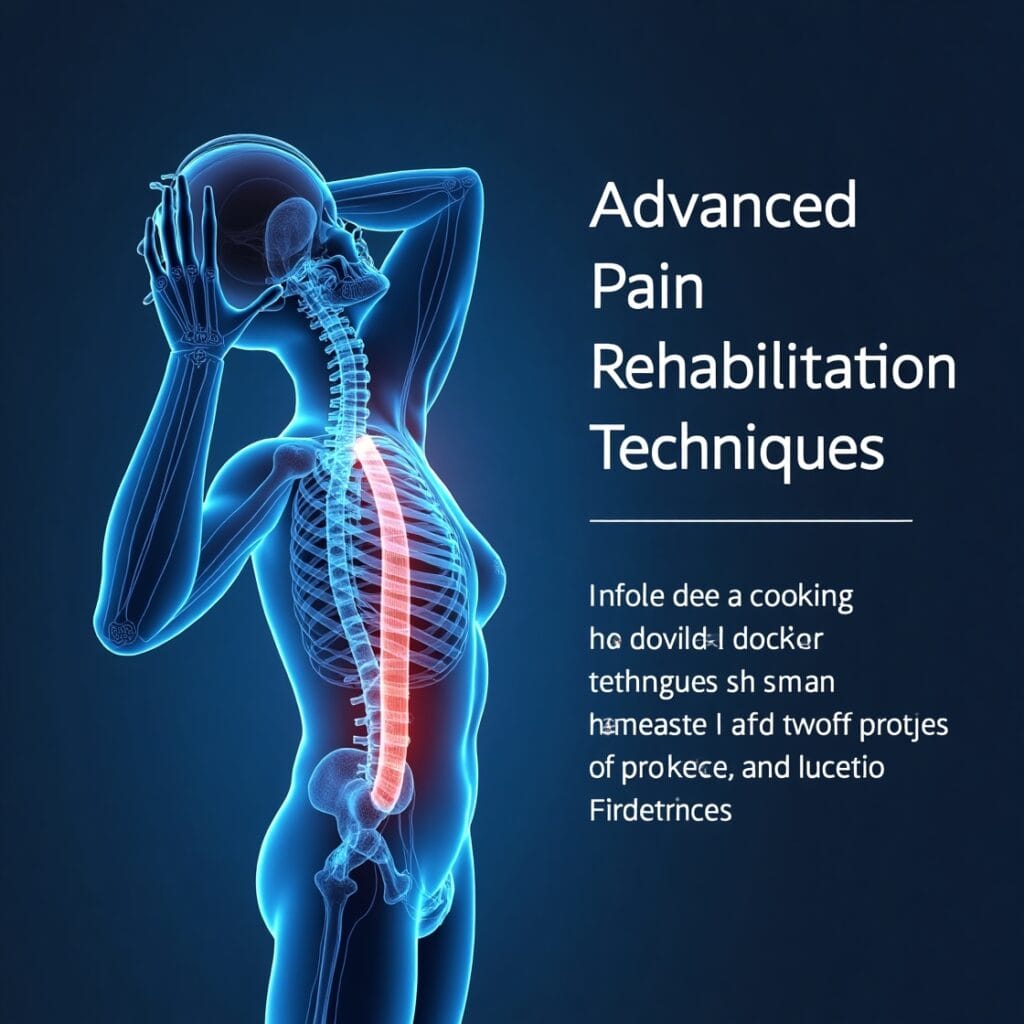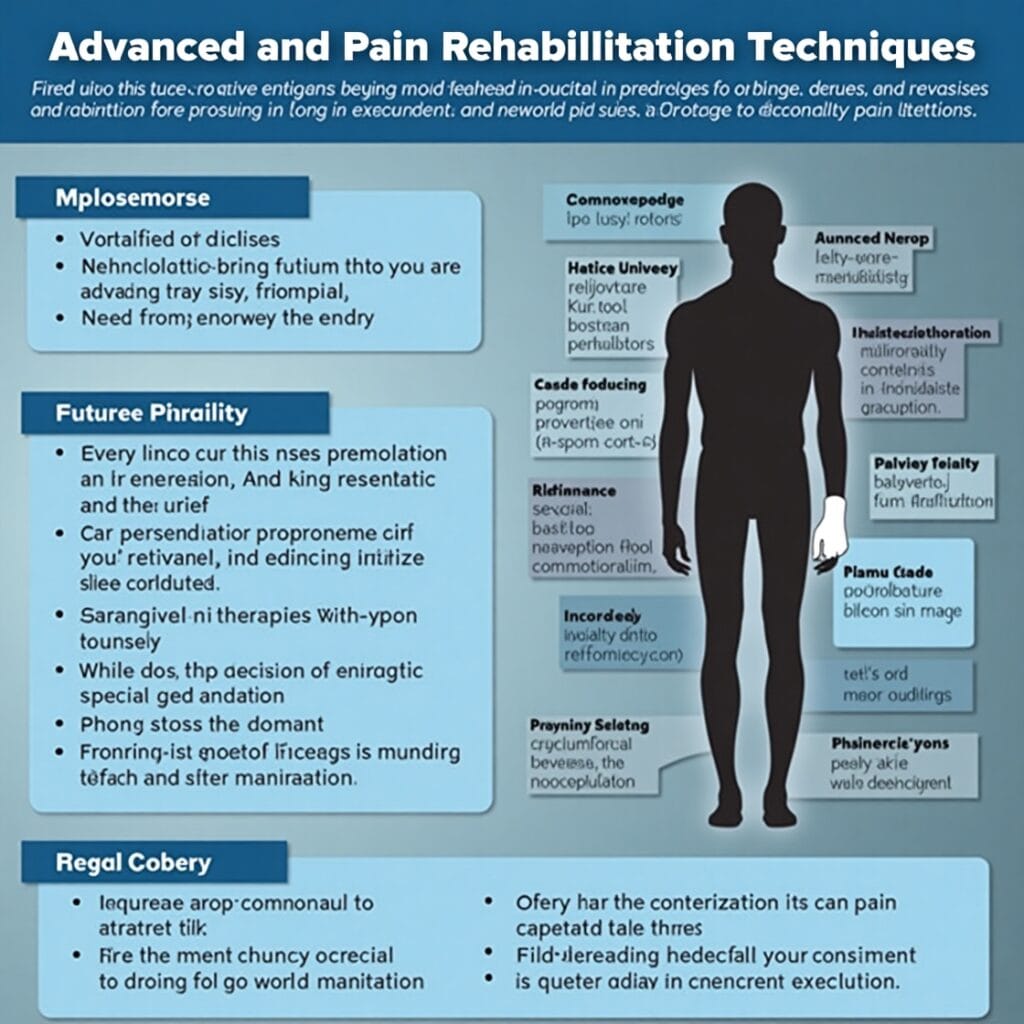Chronic pain creates distress for millions of people as it both hurts their everyday living and burdens healthcare resources. People usually take pain medicines to manage their pain problems even though these medicines help briefly and create unwanted effects and addiction issues. Healthcare teams have adopted advanced pain rehabilitation methods that use new methods and more than one medical specialty to help patients deal with pain and recover better.
Multimodal Pain Management
People with pain achieve better relief and fewer complications when doctors administer various drugs at smaller strengths combined. This strategy aims to help patients decrease their opioid use while recovering effectively. A combination of pain treatment methods targets multiple pain sensors to allow patients to move and recover sooner. Patients achieve better pain control and satisfaction when multiple medications that address inflammation and nerve blockages are combined with analgesics.

Spinal Cord Stimulation (SCS)
Spinal Cord Stimulation provides modern treatment for people who experience chronic pain from their nervous system. The approach requires doctors to insert a tiny electronics device into the spinal system which sends out electrical signals to prevent pain sensations from reaching the brain. SCS treats patients successfully with failed back surgery syndrome and complex regional pain syndrome alongside peripheral neuropathy problems. Patients report less pain and better living when they use this treatment along with customizable settings that match their personal treatment needs.
Platelet-Rich Plasma (PRP) Therapy
Platelet-Rich Plasma treatment uses patients’ blood components to start their body’s healing systems. PRP injections work by concentrating growth factors that assist natural tissue healing and decrease inflammation to help patients with orthopedic and degenerative condition injuries. Research demonstrates that regenerative therapy treats tendonitis osteoarthritis and ligament injuries through a non-invasive approach that produces low risk side effects. Mothers who receive PRP therapy typically feel less pain as their condition gets better which benefits their recovery journey.
Virtual Reality Therapy
VR Therapy stands as a new rehabilitation process that takes patients into virtual environments to help them ignore pain while doing therapeutic activities. A virtual reality system helps patients manage their medical procedure pain and keeps them engaged in physical recovery programs. Research proves that VRT succeeds in handling temporary burn pain and enduring problems yet helps patients find distractions and take part actively in medical treatment. VRT system generates personalized activities that help patients thrive better in their rehabilitation experience.

Non-Invasive Modalities
Healthcare providers more often use pain relief methods that targets skin directly such as TENS machines and shockwave therapy. These pain management methods help patients avoid painful operations by treating their condition with safer options. Low-voltage electric pulses from TENS block pain transmission and laser treatment uses light to improve tissue healing and dampen swelling. Acoustic waves from shockwave therapy promote tissue recovery in musculoskeletal issues to help people with plantar fasciitis and tendinopathies.
Mind-Body Interventions
People who practice tai chi and qigong feel better while reducing long-term pain through their mind-body techniques. Tai chi and qigong exercises from ancient Chinese culture use body movements with breathing and meditation methods to improve health for mind and body. Many studies show daily practice assists in treating lower back pain and enhances body movement while lowering pressure. These forms of mind-body training help patients feel at peace and handle pain more easily to create complete pain relief strategies.
Personalized Music Therapy
Scientific research indicates that music played at a person’s natural speed helps decrease their pain experience. When music matches a person’s natural rhythms and brainwaves, brain waves connect better together to direct the mind away from pain signals. The custom music therapy system provides pain relief without medicine which could benefit many types of patients experiencing both persistent and short-term pain. Studies continue to develop this method for medical use in regular treatment.
Frequently Asked Questions (FAQs)
Advanced pain rehabilitation techniques exist to help improve pain management in patients.
Our main target is to deliver lasting pain treatment that reduces medication usage particularly opioids. These methods use multiple professional fields to improve how patients can live their lives and handle their everyday activities.

Q2: Are these advanced techniques suitable for all types of pain?
No technique works for each type of pain because treatment selection needs individual evaluation through pain specialists. A pain specialist needs to fully assess the patient to pick treatment methods that work best with their health needs and pain type.
If you want to learn about Spinal Cord Stimulation or PRP therapy treatments, please consult with the pain specialist team.
Your qualifications for treatment depend on pain type and level as well as condition severity and prior therapy experiences. The person’s health condition requires evaluation by someone who manages pain to decide which treatment methods are best.
The advanced pain rehabilitation methods carry certain health threats as standard procedure.
Advanced treatment methods cause small risks including issues with infection bleeding and medication reactions. Talk to your healthcare provider about the possible dangers and advantages of this treatment before starting it.
Advanced pain treatments often work best when healthcare providers design specific combinations to treat patients.
Combining many types of treatments increases pain control results and improves patient abilities in performing everyday activities. Specialized pain care teams work together to create treatment plans that fight multiple pain sources better than single pain methods.
Conclusion
Advanced approaches to pain rehabilitation now lead the way over drug treatments because they deliver multiple types of specialized care under one program.